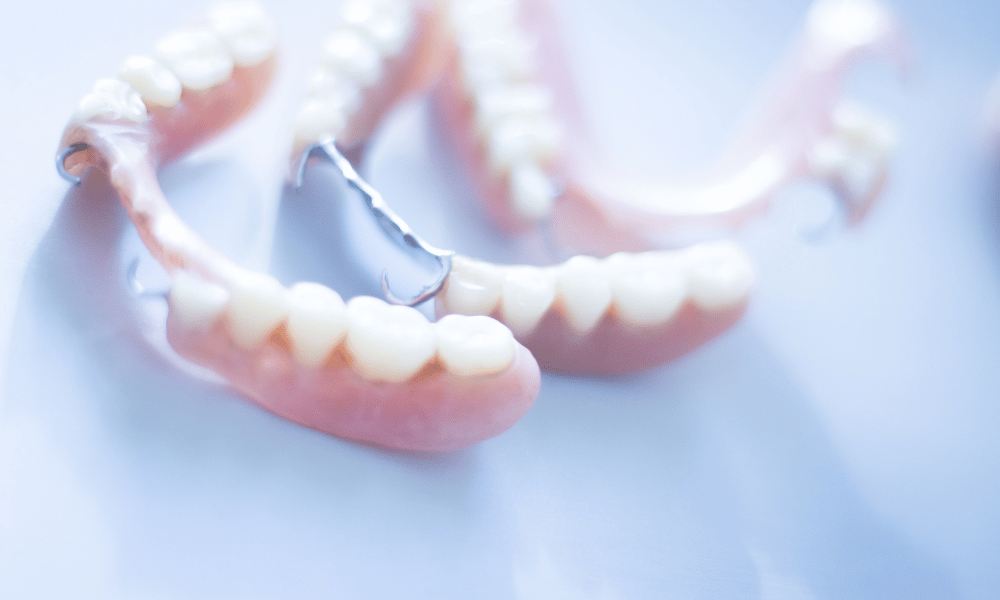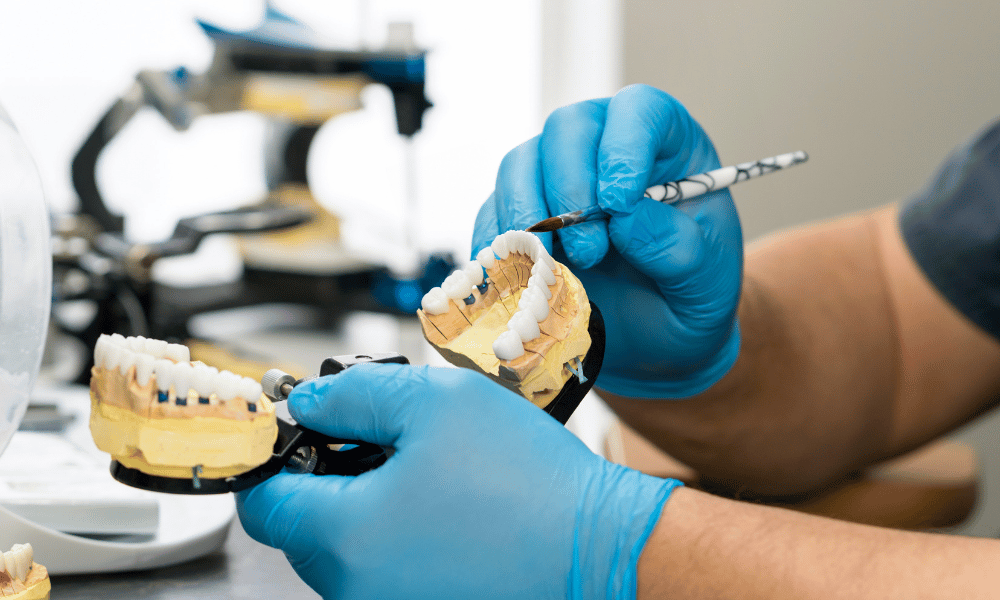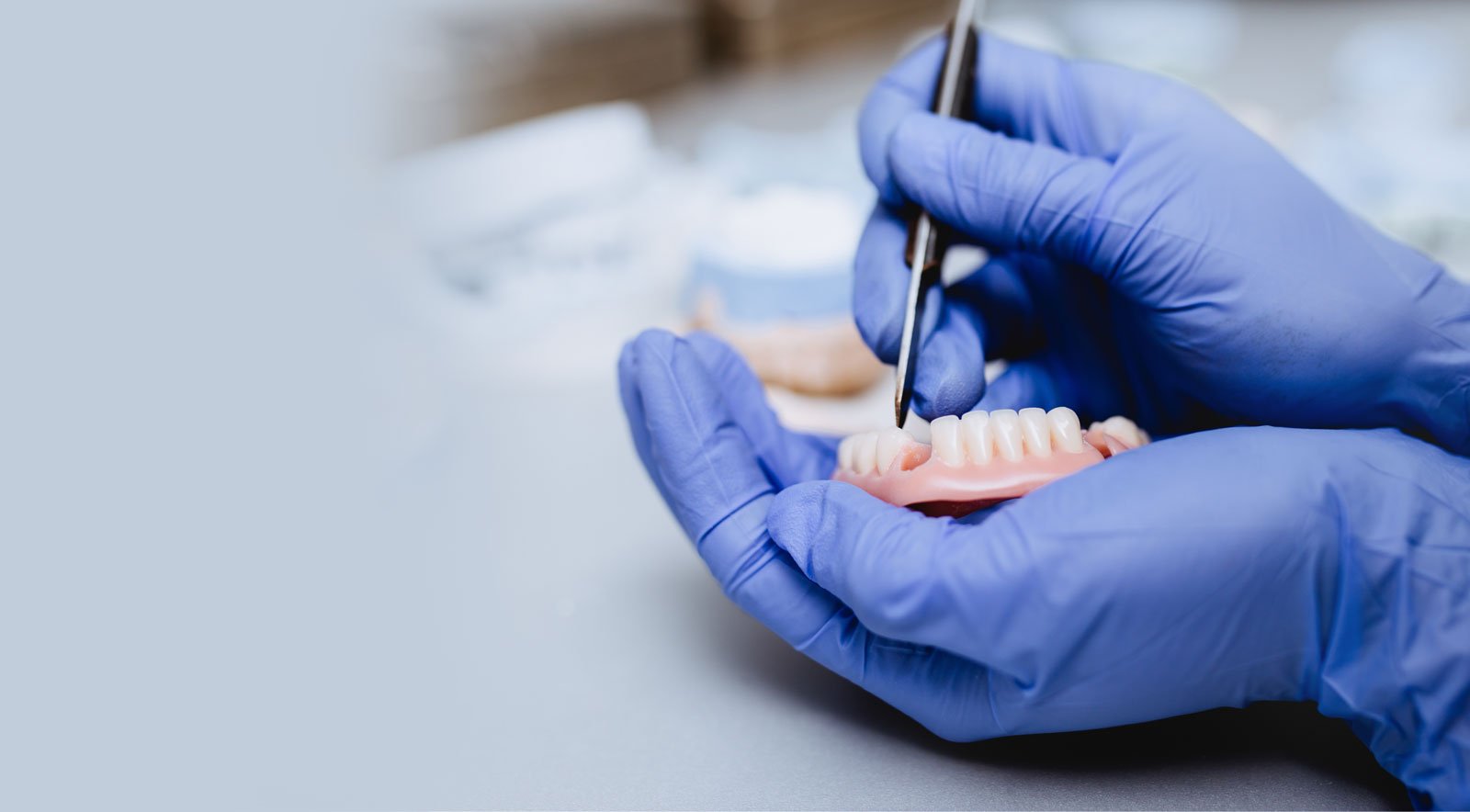March 06, 2024


Written by:
Greg Schubert
Restoring a confident smile and functional bite through partial dentures can be a transformative experience. The partial denture process is a nuanced and personalized approach to replacing missing teeth, bridging the gap between aesthetics and functionality.
Our guide delves into crafting, tailoring, and integrating partial dentures into your patient's oral landscape. From your patient's initial consultation to their final fitting, this guide provides a complete overview of the denture process from start to finish, demystifying the process so your patients can reclaim their oral well-being and regain a natural, radiant smile.
A partial denture is a removable prosthetic designed to replace multiple missing teeth either in the upper or lower sections of your patient's mouth. False teeth are attached to a plate made of all plastic or a combination of metal and plastic. The plate is typically pink or gum-colored to blend in with the rest of the mouth.
These removable dental products are not meant for continuous wear. PRO-Craft Dental and most dentists recommend removing the dentures at night for cleaning.
Partial dentures function similarly to natural teeth. They are custom-designed to fit precisely and align with the rest of your natural teeth. Additionally, partial dentures help maintain the position of your patient's remaining natural teeth by preventing them from shifting. Filling the gaps left by missing teeth restores your patient's ability to chew, speak, and smile confidently.
Unlike full dentures, which replace all teeth in a dental arch, partial dentures are specifically designed to replace one or more missing teeth while preserving existing natural teeth. Our Valaplast Flexible Partial Dentures take this one step further by having a natural look and feel with the flexibility of the material used in the partial denture.
Aside from the material used to build the dentures, there are different kinds. The two main types are standard and premium dentures, which differ in price, aesthetics, and function.
No matter what kind of denture your patient needs, the partial denture must fit properly for optimal function and comfort. To guarantee the best fit for your patient, you must customize the denture to match your patient's gum shape, tooth color, and overall dental anatomy.
When it comes to creating partial dentures for your patients, the traditional method typically goes as follows:
Following this step-by-step guide means obtaining high-quality partial dentures, restoring missing teeth, enhancing smiles, and promoting oral health. Collaboration with certified dental lab technicians, such as our PRO-Craft team, is essential for accurate results and patient satisfaction.
In modern dentistry, integrating digital intraoral scanners has revolutionized the digital impression technique and process for partial dentures. With technologies like intraoral scanners and CAD/CAM technology, the procedure increases speed, is more cost-effective, and is more convenient for you and your patients.
Relying on traditional physical mold impressions often poses challenges such as errors in accuracy, time-consuming procedures, and patient discomfort. Instead, intraoral scanners allow dentists to swiftly capture highly detailed digital impressions of the patient's oral cavity in a fraction of the time.
Incorporating this technology into the partial denture process looks something like this:
The advantages of utilizing digital intraoral scanners for partial denture impressions are evident for you and your patients.
For you, it means:
For your patients, this means:
Incorporating digital dental technologies revolutionizes the partial denture process, mitigating the common pain points of traditional methods.
PRO-Craft Dental's standard turnaround time for chrome partial dentures is nine working days, five days for digital scans, and only four days for Valpast and Iflex partials. We also offer free rush cases!
So, in a little over a week, your patients can receive partial dentures and smile even wider.
With over 40 years of experience, the PRO-Craft Dental team knows how to create beautiful restorations and provide high-quality customer care throughout the process. When working with us, you can directly access our master technicians to assist you during every case.
Give your patients the care and restorations they deserve by working with PRO-Craft Dental. Contact us today to get started, or request a free starter kit.


Denture fabrication for edentulous patients is a meticulous process that involves effective case planning and a dental laboratory you can rely on for natural-looking esthetics and accuracy, so we’re...
Read More
Dentures are a minimally invasive and cost-effective way to provide a patient with either full or partial dental restoration. Still, it is easy to take the wrong path when searching for a quality...
Read More
Partial dentures are a practical solution for restoring your patient's confident smile while remaining functional. A crucial component is the clasp, which provides stability and retention by securely...
Read More